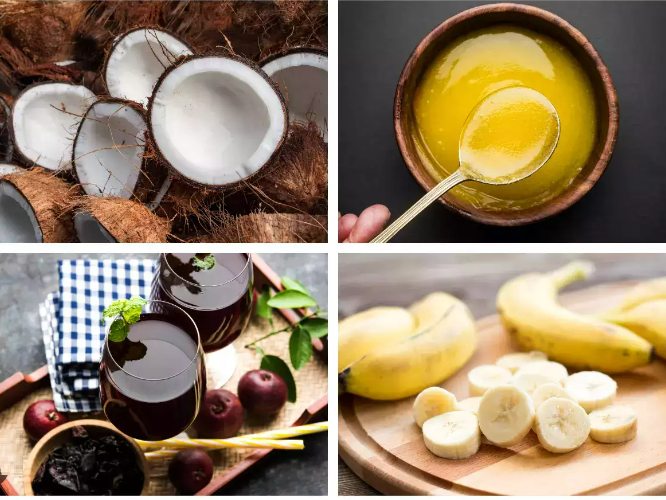
Spice Up Your Health: Unveiling Immune-Boosting Wonders in Indian Cuisine.
Ratna Rajaiah’s latest book, “Immunity In A Spoon Of Ghee,” explores the abundance of superfoods present in Indian kitchens. According to the author, incorporating these superfoods, combined with traditional wisdom, can contribute to a healthier mind, body, and lifestyle.
Summing up the essence of her book, Rajaiah humorously remarks, “DAL-ROTI khao, prabhu ke gun gao.” The book delves into various immunity-boosting elements, including nuts, amla, ginger, and turmeric, emphasizing that there is no singular magic solution for good health. Rajaiah suggests a holistic approach, involving exercise, quality sleep, engaging in activities that bring joy, and embracing the dietary habits of previous generations, such as dal-chawal, sambar-rice, dal-roti, or curd rice, which she considers among the healthiest meals globally.
The inspiration for “Immunity in a Spoon of Ghee” stemmed from Rajaiah’s personal experience of using food to address the side effects of medical treatments and build a healthier body. The book gained momentum during the COVID-19 pandemic, with a heightened focus on immunity. Rajaiah emphasizes a simple premise—that individuals can adopt practices like proper nutrition, exercise, and sufficient sleep to naturally enhance their immunity to diseases, echoing concepts rooted in Ayurvedic texts for thousands of years.
Rajaiah delves deeply into the world of home-cooked meals, exploring the treasures of Indian kitchens. She highlights the dynamic duo of immunity, turmeric and ginger, along with the trifecta of health—tamarind, lemon, and kokum. Additionally, she explores the diverse array of nuts, fruits, and oils extensively utilized in regional cuisine.
The extensive research conducted by Rajaiah for “Immunity in a Spoon…” is evident throughout its pages. Drawing from Ayurvedic treatises to Sangam literature, she sifts through ancient Indian manuscripts to illustrate how food can contribute to a better life.
Rajaiah brings attention to overlooked facts that many Indians may take for granted. For example, she praises the ubiquitous Indian thali, considering it a time-honored method of consuming a well-portioned meal. An interesting anecdote revolves around ghee, as Rajaiah reveals that Julia Child, a renowned celebrity chef, introduced the West to ghee decades ago. Child’s experience with a dish called sole meunière in 1948, featuring pan-fried fillets of sole, supposedly transformed her from a mere food enthusiast into a passionate cook. The recipe, including the use of clarified butter or ghee, was featured in her 1989 book, “The Way to Cook,” and she even detailed how to make ghee in her last book, “Julia’s Kitchen Wisdom: Essential Techniques and Recipes From a Lifetime of Cooking,” published in 2000.
Throughout Rajaiah’s book, various stories underscore the significance of returning to our roots, whether through the use of cold-pressed oils or a reliance on seasonal, hyperlocal vegetables. The author contends that our traditional wisdom was anchored in a holistic lifestyle, and she laments the divergence from these practices in contemporary times.
She illustrates this point with an example: “Every day when I open the Google homepage, there are always pages on ‘five healthy foods’… and if you examine these lists, at least 50 percent of them feature foods that are not only unfamiliar but are also unavailable in India! And those few that are familiar may have been given names we don’t recognize.”
Rajaiah highlights a couple of favorites among “celebrity” nutritionists, such as flaxseed, a staple in Kannada cuisine for centuries, known locally as agase, and moringa, also known as the drumstick. She notes that in the West, moringa is gloriously referred to as the “Miracle Tree.” In the past, when trees adorned South Indian backyards, they often included a coconut tree, a curry leaf tree, bananas, and a drumstick tree. Rajaiah emphasizes that every part of the drumstick tree, including the roots, holds value—be it medicinal, nutritional, or both.
However, she laments the tendency to wait for the West to discover the wealth of wisdom and healthful resources inherent in Indian traditions, similar to what happened with yoga.
From probiotics to coconut oil and karela, the author catalogues the ancestral origins of indigenous foods and their relevance in an Indian context. For instance, despite peanuts being unfairly compared to cashew nuts, Rajaiah reveals that consuming just a handful of peanuts with jaggery daily can fulfill a significant portion of one’s protein and immunity-building requirements.
Rajaiah emphasizes that basic foods can address our dietary needs, urging Indians to reflect on their grandparents’ lifestyles. She points out that every state boasts a rich repository of traditional greens, citing the example of Karnataka where greens grow by riverbanks, available for free plucking by women who then make bhaji out of them. Additionally, she notes that Ayurveda’s potent medicine, brahmi, grows wild in rice fields in the region.